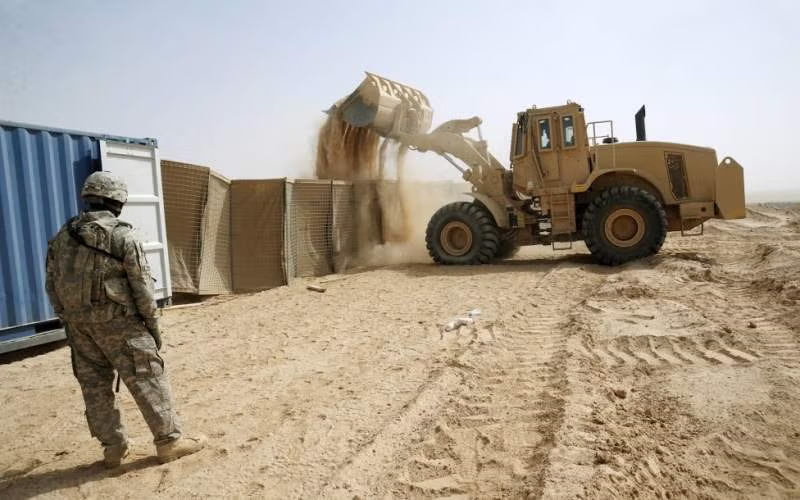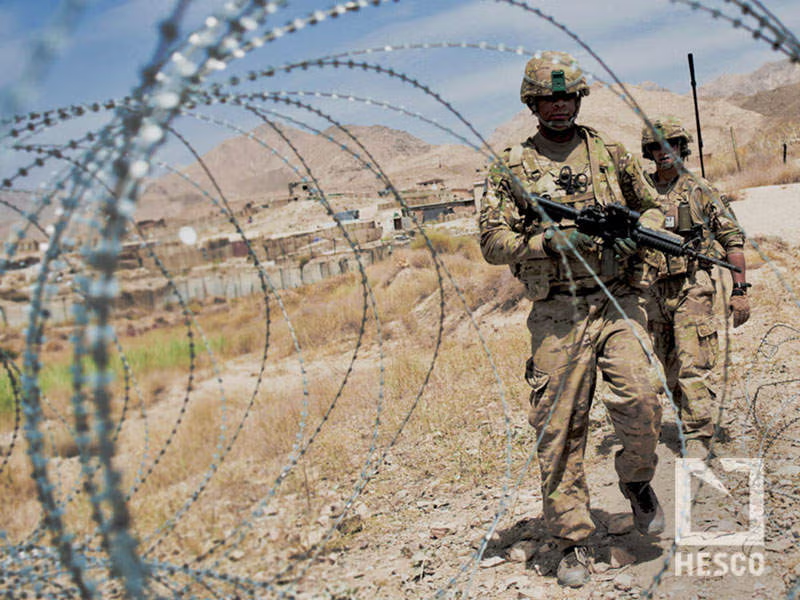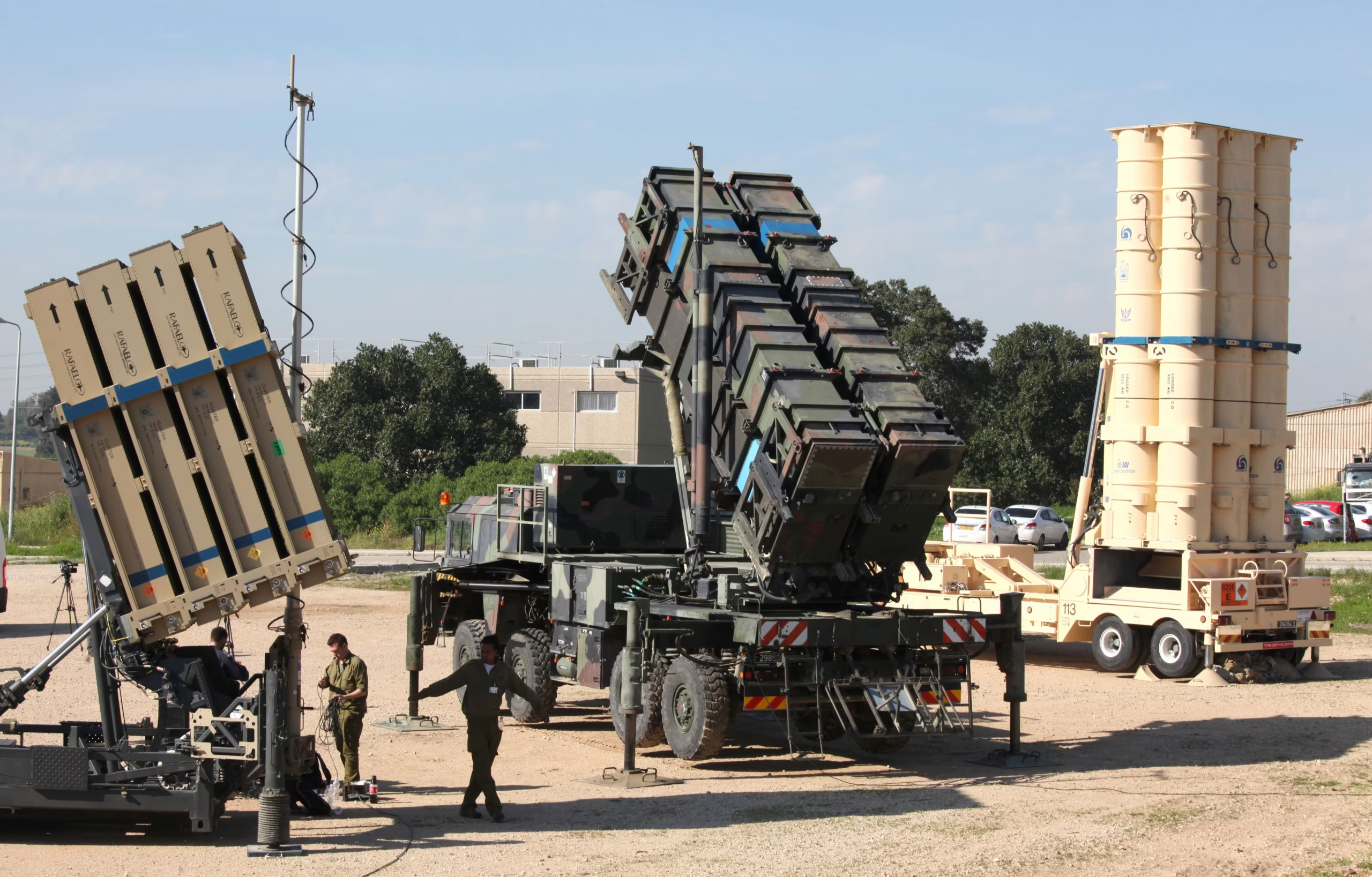The “Metatron” project represents a comprehensive system for the protection of Israel, integrating advanced engineering solutions, technologies, and security systems to ensure the reliability and resilience of its borders. Including protection from tunneling, modern monitoring and surveillance systems, as well as environmental and energy solutions, the wall and its infrastructure are designed to prevent threats from various directions – from underground attacks to airborne and cyber threats.
Protective Coatings and Materials
- Anti-lifting Coatings
- Slippery surfaces or electric fields to prevent lifting and attempted breaches of the structure. (e.g., Security Mesh Systems by Hesco).
- Polymer coatings in the underground section of the trench to protect against tunneling (DuPont™ Corian® and similar).
- Anti-blast Coatings
- Multi-layered reinforced concrete with blast-proof chambers every 500 meters for protection against explosive attacks (concrete reinforced with Tytan® and systems using Polyurea coating).
- Protective Screens
- Flexible protective screens to minimize the impact of earthquakes, underground explosions, and shock waves.








Sensors and Monitoring Systems
- Ground Penetrating Radars (GPR)
- For monitoring underground activity, including tunneling and any unauthorized movement under the wall.
- The GSSI SIR 4000 equipment is expected to be used for ground-penetrating radar scans at depths of up to 100 meters, similar to the equipment used in border security projects in EU countries.
- Seismic Sensors
- Seismic sensors for monitoring earthquakes and other seismic vibrations affecting the structure of the wall.
- Geosense® GEO-SMART sensors will be used, widely applied in military and security systems worldwide.
- All sensors must be integrated into the overall management system and analyze vibrations and soil movement.
- Thermal Cameras and Surveillance Cameras
- For 24/7 monitoring of all sections of the wall and detecting suspicious objects or activities, FLIR Systems thermal cameras (e.g., FLIR H-Series models) will be used, providing high-quality images even in low-light conditions.
- Acoustic Monitoring
- For detecting unusual vibrations related to attempts to tunnel, digging, or other changes in the soil structure.
- The Microflown Acoustics system will be applied, which is used for monitoring high-security sites such as military bases and facilities in Israel.
- Pressure and Gas Sensors
- Gas detectors to detect tunnel explosions or infiltration of militants.
- The Honeywell Analytics system will be used with sensors that can detect changes in pressure and gas concentration underground, as well as Sensit® HXG-3, used in emergency situations.
- Motion Sensors
- Motion sensors for detecting active attempts to penetrate or move near the wall.
- Both passive infrared radiation sensors and Ultrasonic Movement Sensors, as well as, in some sections, radar motion sensors will be used.








Automated Security Systems
- Automatic Fire Points with AI
- For recognizing and neutralizing threats, the Rafael Sentry-Tech system, widely used for border protection in Israel, will be used. This automated weapon system uses AI to classify objects such as drones or unauthorized personnel.
- Fire points equipped with sensors and controlled by automated systems for quick response to threats.
- Mobile Air Defense Systems
- Protection systems such as Iron Dome by Rafael Advanced Defense Systems, used for intercepting missiles and UAVs, providing defense against airborne threats.
- Automated Reconnaissance Drones
- Drones from Elbit Systems Skylark™ and Aerostar® will be used for patrolling and surveillance, specifically designed for border monitoring. These drones are equipped with sensors, cameras, and AI for data analysis.
- Mobile IDF Checkpoints
- Mobile checkpoints of the IDF will be placed every 5 km to ensure control and prompt response.








Energy Autonomy and System Support
- Autonomous Energy Sources
- Solar panels and wind turbines will provide autonomous power to all engineering systems, including lighting, monitoring, cameras, and other security components.
- Tesla Solar Roof solar panels and Siemens Gamesa wind turbines will be used, which are applied in large infrastructure projects worldwide. For backup power, Enecsys® microreactors will be used to ensure a stable power source in extreme situations.








Security Zones and Controlled Areas
- Security Strip (Dead Zone)
- The width of the security strip is 1-2 km along the entire wall. For demining and clearing this area, Husqvarna and EOD Robotic Systems will be used to ensure safety from hidden threats such as explosive devices or mines.
- A complete ban on construction and agriculture in this zone to minimize threats and prevent hidden actions.
- Access Control
- Military police, drone systems, and automated monitoring systems for full control over access and activities in the dead zone.
- FLIR Systems and Terma systems will be used for monitoring large areas and preventing unauthorized access.
- Access Restrictions
- Intensive monitoring using satellites and drones to track movements over significant distances.








Centralized Security Management
The “Metatron” project involves the integration of all security elements – from border guards on the ground to satellite systems and drones, with the creation of a centralized command center that will coordinate all operations and ensure interaction between various levels and components of the system. To enhance management efficiency, this approach will also include planned and emergency technical maintenance, patrolling, and monitoring.
Division within the Israel Border Police (Magav)
Within the Israel Border Police, a specialized division will be created, responsible for coordinating all actions of the security system. This division will consist of inter-agency teams from various authorities, including border guards, military personnel, cybersecurity specialists, and data monitoring and analysis experts.
The division will work in close cooperation with other services, such as the Israel Defense Forces (IDF) and intelligence agencies, and will have command posts in place for prompt response.
Integration of All Security and Surveillance Systems
Data from sensors, such as ground-penetrating radars, thermal cameras, seismic sensors, and surveillance cameras, will be collected and transmitted to the centralized command center, where they will be processed using artificial intelligence to detect threats and make decisions. Satellites and drones with AI will provide additional surveillance and transmit data to the system for rapid analysis.
Decisions regarding immediate response to threats will be made in real-time using the integrated system, ensuring a quick response and minimizing damage.
All data and commands will be transmitted to the border guards on-site, as well as to the military forces, who will use mobile air defense systems, operational checkpoints, and other resources to prevent threats.
Patrolling and Mobility
- Drone Patrolling
- The patrolling system will include drones with AI that will monitor the perimeter of the wall and the surrounding area. The drones will use thermal cameras and motion sensors to track any suspicious activities.
- The drones will patrol automatically, especially at night when visibility is limited.
- Patrolling of the area will include not only detecting threats but also checking the condition of the infrastructure.
- Mobile Patrols and Checkpoints
- Mobile patrols and checkpoints of the IDF will be placed every 5 km to ensure continuous control. These patrols will operate based on data received from sensors and drones, with the ability to respond immediately.
Engineering and Technical Maintenance
- Planned Preventive Maintenance
- Regular checks of all security systems (seismic sensors, cameras, monitoring systems, and defense systems) will be carried out to prevent failures and maintain the system’s functionality at a high level.
- Emergency Recovery Operations
- In the case of damage or malfunction in the system, robotic repair stations will be deployed to quickly restore damaged sections of the wall.
- In the case of more severe damage, emergency teams will be able to quickly localize and eliminate threats, minimizing the consequences.








Environmental Integration
- Green Engineering
- Multi-level eco-ducts to provide safe migration paths for animals.
- Minimization of Environmental Impact
- The project includes systems to control the impact on ecosystems, such as monitoring flora and fauna, as well as preventing light pollution by installing energy-efficient lighting systems.
Legal and Control Systems
- International Agreement
- Signing international agreements on the right to unequivocally destroy tunnels and control their emergence.
- Placement of international observers to ensure transparency and legality of actions.
- Environmental Standards Monitoring
- Establishment of checkpoints to ensure compliance with environmental standards within the safety zone.
Costs and Resources
- Technology Costs per 1 km:
- Sensor Systems (seismic sensors, pressure and gas sensors, thermal cameras, motion sensors): $57,500
- Satellite Control: $1.25 million
- Military Bases and Fire Points: $5 million
- Cameras, Sensors, Lasers, UAVs, Ground Robots, AI: $1.055 million
- Cybersecurity and Backup Systems: $9,000
- Total Cost per Kilometer: Approximately $7.4 million
- Overall Cost for 1115 km: Approximately $8.2 billion
The provided budget is preliminary and approximate. It does not include the construction cost of the wall’s structures, which is detailed in the Wall section. All financial evaluations are based on approximate equipment costs at the time of preparing the materials.
Conclusion
The “Metatron” project is a comprehensive structure incorporating many advanced solutions for the protection of Israel. The wall is equipped with multi-layered protection, modern sensors, automated security systems, energy independence, and environmental solutions to preserve the surroundings. These measures will provide a high level of protection from various threats, including tunneling, seismic impacts, and airborne attacks.
In turn, the integration of centralized management, patrolling, and technical maintenance in the “Metatron” project will ensure a high level of coordination, efficiency, and rapid response, ensuring the security and longevity of the wall throughout its operational lifespan.